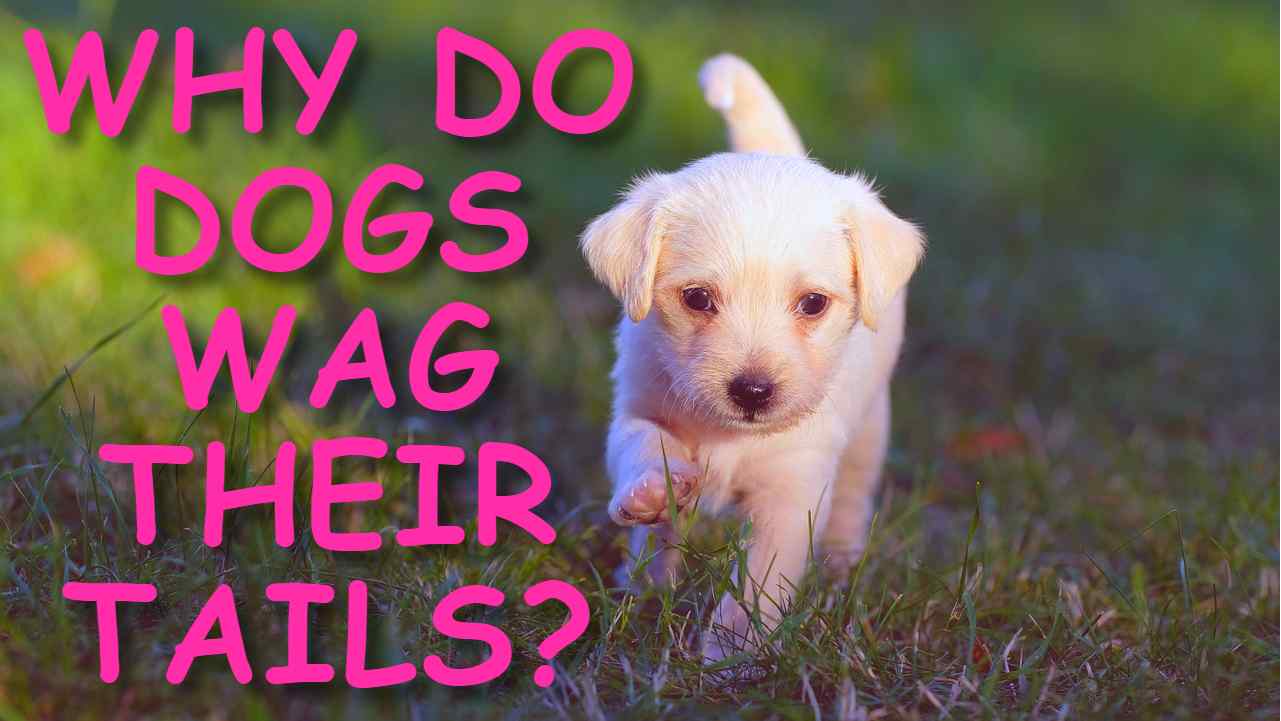Table of Contents
Dogs are the most beloved pets in many households, and they often make us smile with their cute and endearing behavior. One of the most common behaviors that dogs display is tail wagging. Have you ever wondered why dogs wag their tails? Many people believe that it is simply a sign of joy, but there is much more to it than meets the eye. In this article, we will explore the various reasons why dogs wag their tails and how we can understand them better.

What is Tail Wagging?
Dogs wag their tails as a form of communication. It is their way of expressing their emotions and feelings towards humans or other animals. Tail-wagging can convey different messages depending on the position, speed, and direction of the wag.
A fast and wide tail wag usually indicates excitement and happiness. A slow tail wag could mean that the dog is unsure or hesitant about something in its environment. If a dog wags its tail low, it may show submission or fear towards another animal or person.
Interestingly, dogs also have a preference for which side they wag their tails to communicate certain emotions. Studies have shown that when dogs encounter people they know to be friendly, they tend to wag their tails more to the right side; whereas when faced with an unfamiliar or potentially threatening situation, dogs will often favor left-sided tail-wagging.
In conclusion, understanding how dogs use body language such as tail-wagging can help humans better communicate with them and build stronger relationships based on trust and understanding.

Evolutionary Purpose
Dogs wag their tails for a variety of reasons, but one of the most interesting is the evolutionary purpose behind this behavior. Many scientists believe that tail wagging originated as a form of communication between dogs and their wild ancestors. When wolves hunt in packs, they use body language to coordinate their movements and communicate with each other.
Tail wagging may have evolved as a way for these pack animals to signal their intentions and emotions to each other. A low, slow tail wag might indicate submission or uncertainty, while a quick, high-speed wag could indicate excitement or aggression. As dogs evolved from wolves and became domesticated over time, they likely retained this instinctual behavior as a way of communicating with humans.
Today, dogs still use tail wagging as a means of communication with their owners and other dogs. They may also use it to express emotions like happiness, fear or anxiety – just another fascinating example of how evolution has shaped our furry companions over time.
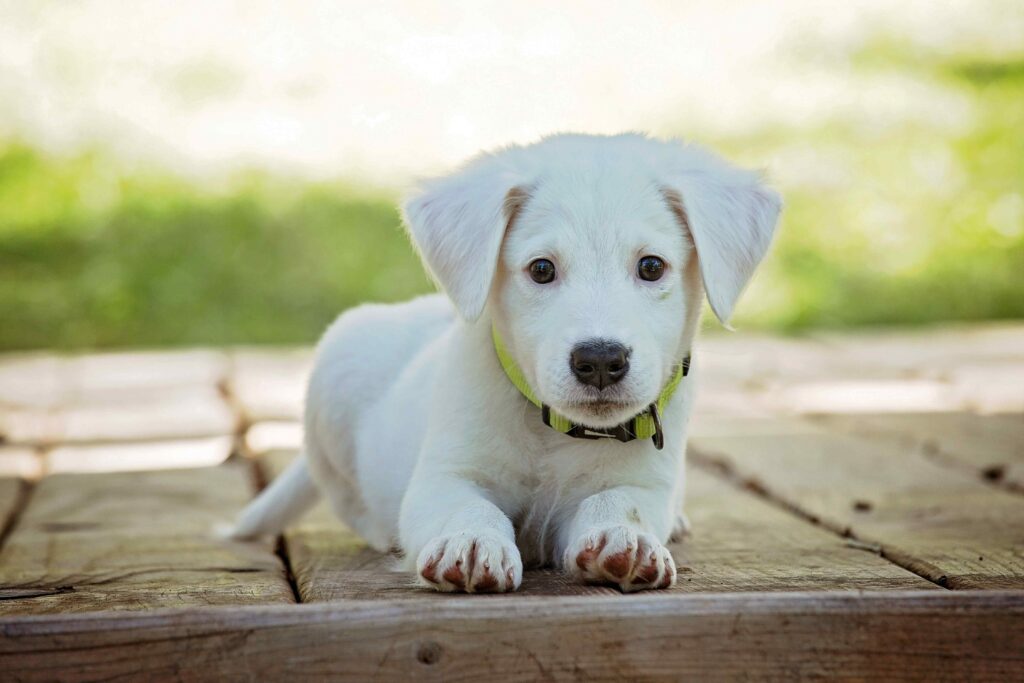
Communication Tool
A communication tool is any instrument or mechanism that helps individuals convey a message. While humans have an extensive range of tools to facilitate communication, animals also possess various mechanisms that enable them to communicate. In the case of dogs, their tails are an essential communication tool. Dogs wag their tails for various reasons, and it is usually a means of communicating with other dogs or even humans.
One reason why dogs wag their tails is as a sign of excitement or happiness. When you get home from work and your dog runs up to you with its tail wagging vigorously, it’s an indication that they’re excited to see you and happy about your return. However, tail-wagging can also indicate anxiety, nervousness or fear in certain situations such as when the dog encounters unfamiliar people or animals.
In conclusion, a dog's tail serves as an important communication tool between themselves and other animals (including humans). Tail-wagging can signify different emotions such as excitement, happiness but also anxiety and fear. Understanding these signals can help pet owners better understand their pets’ moods and respond accordingly – either by playing with them when they're happy or providing reassurance when they're fearful/anxious.
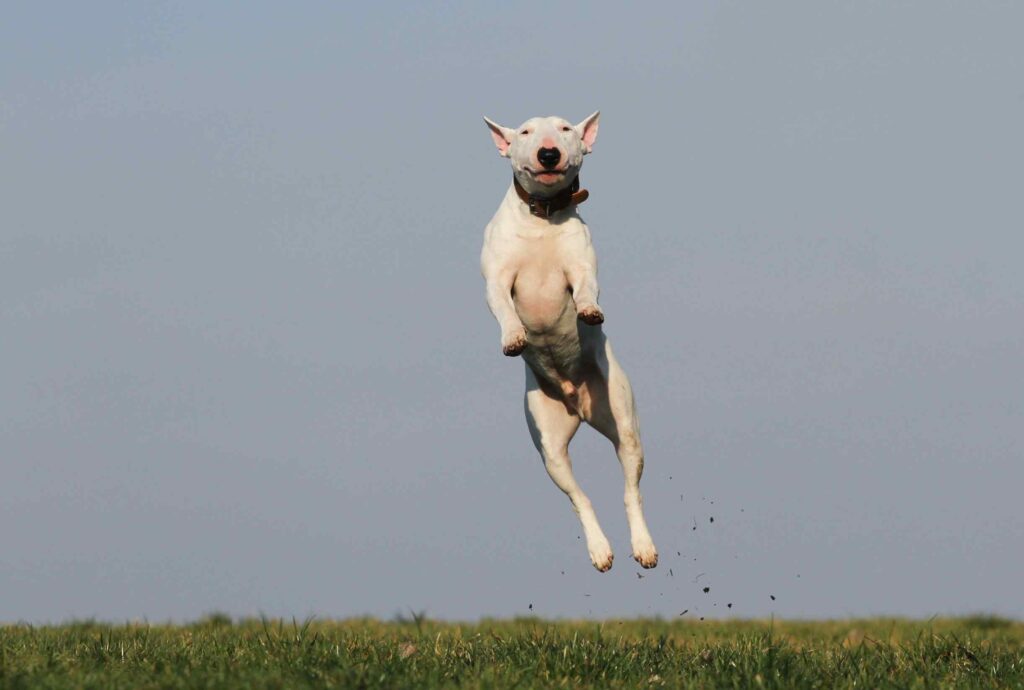
Stress Relief
Dogs are known to be very expressive creatures, and one of the most recognizable ways they communicate is through their tail wagging. But why do dogs wag their tails in the first place? Tail wagging is a form of body language that can convey a range of emotions and intentions, including happiness, excitement, fear, and aggression.
When a dog wags its tail happily, it's usually because they're feeling positive emotions like joy or contentment. This type of tail wag is typically accompanied by other signs of happiness such as relaxed ears and an open mouth. On the other hand, if a dog is feeling threatened or fearful, they may still wag their tail but with much less enthusiasm and at lower angles.
It's important to pay attention to your dog's body language as it can provide valuable insight into how they're feeling. If you notice your dog's tail position suddenly change or if they start vigorously wagging their tail in an unfamiliar way, it could be an indication that something is bothering them or that they need some extra attention from you.

Fun and Happiness
Dogs are known for their ability to bring joy and happiness to our lives. One of the most common signals that a dog is happy is when they wag their tail. But why do dogs wag their tails? It turns out that there are many reasons why dogs wag their tails, and not all of them are related to happiness.
Firstly, dogs may wag their tails as a way to communicate with other dogs or humans. For example, a slow and low tail wag may indicate that the dog is feeling relaxed while a fast and high tail wag may signal excitement or aggression. Secondly, some researchers believe that tail-wagging may release endorphins in dogs which can create feelings of pleasure or happiness. Lastly, some breeds like retrievers and spaniels have been bred specifically for tasks such as retrieving game birds which require them to have an energetic and enthusiastic temperament- hence they often show more vigorous tail-wagging than other breeds.
In conclusion, it's important for pet owners to understand what different types of tail-wagging mean so they can interpret how their dog is feeling at any given moment. Ultimately though, whether your dog's tail is slowly thumping against the floor or wildly whipping back and forth- seeing your furry friend happily wagging its tail will always be sure to put a smile on your face!
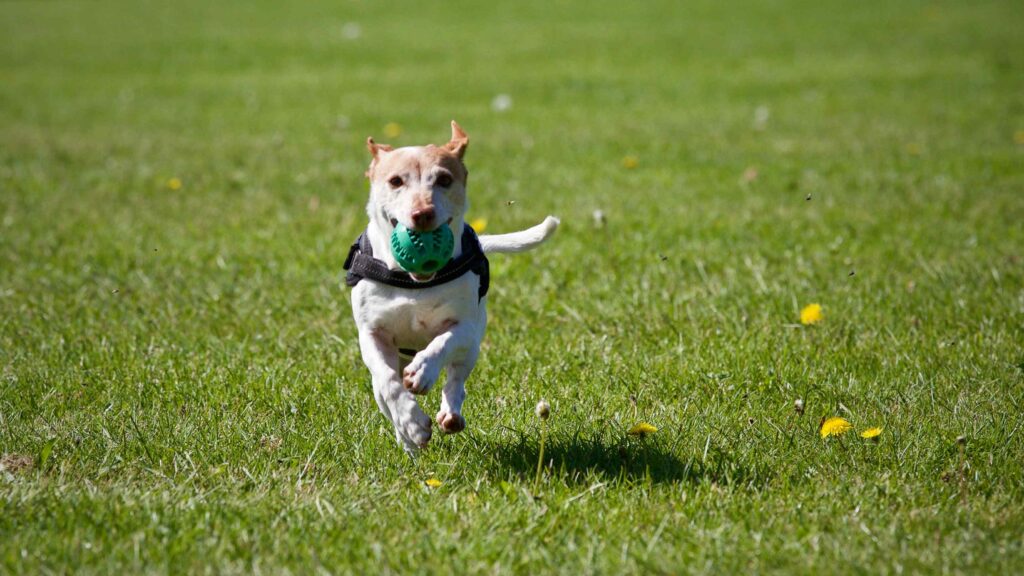
Exercise Stimulation
Dogs wag their tails for a variety of reasons, but one of the most common is excitement or stimulation. Exercise is an excellent way to provide your furry friend with this type of stimulation, and it's essential for their overall health and well-being. Regular physical activity helps to build muscle tone, maintain a healthy weight, and release endorphins that can improve mood and reduce stress.
In addition to the physical benefits, exercise also provides mental stimulation for dogs. Activities like playing fetch, going on hikes or long walks, or training sessions require concentration and problem-solving skills from our four-legged friends. Mental stimulation is just as important as physical activity when it comes to keeping dogs happy and healthy.
It's important to remember that different breeds have different exercise needs. While some dogs thrive with high-intensity activities like agility training or running alongside a bike, others may prefer gentler activities like swimming or leisurely walks around the block. Consult with your vet if you're unsure what types of exercise are best suited for your dog's breed and age!
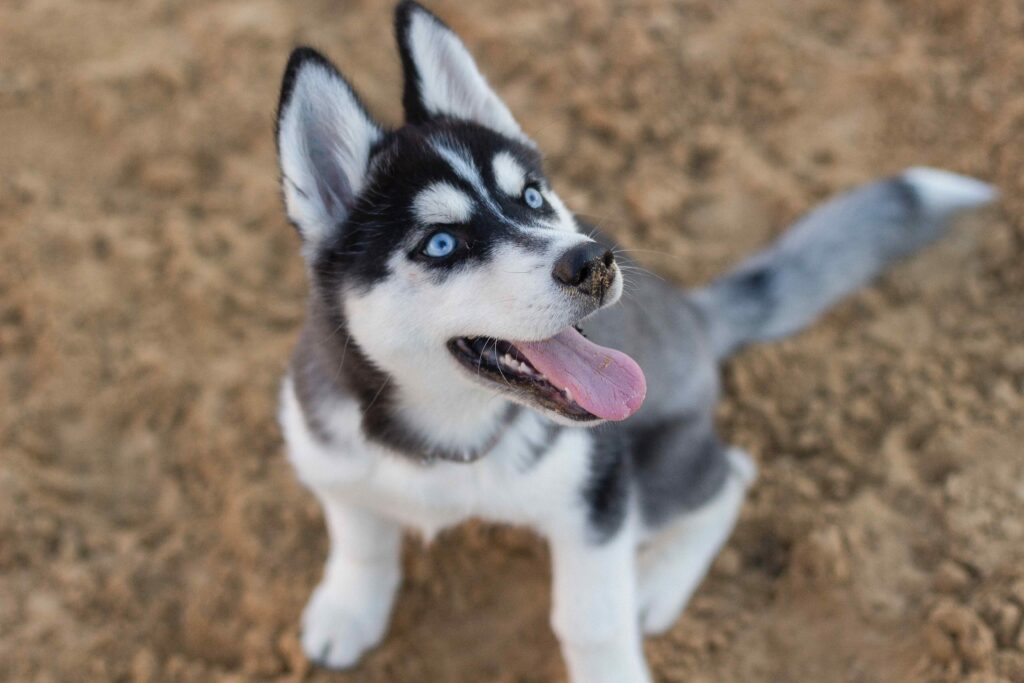
Different Dog Breeds Wag Their Tail Differently
Did you know that different dog breeds wag their tail differently? Wagging tail is a signal that dogs use to communicate their emotions and intentions with humans and other canines. Dog tail is an important part of their communication system, and dogs can hold their tail in different positions to convey different messages.
For example, when a dog is feeling submissive or scared, it might tuck its tail tightly between its legs. Similarly, dogs use their tails to signal friendliness towards other dogs or humans by wagging it vigorously. Interestingly, dogs use different hemispheres of their brain to control their tail movements. Research done on this topic has shown that when a dog wags its tail to the right, it suggests it's feeling happy and relaxed.
Conversely, when the dog wags its tail to the left, it could indicate it's feeling anxious, afraid, or uncertain. The way a dog holds its tail can act as a cue for veterinarians to determine its emotional state and can help dog owners better understand their furry friends. Understanding why do dogs wag their tail differently can help us communicate better with our canine companions and build strong bonds of trust and love.

A Tucked Dog Tail Can Be A Way Dog Communicate Nervousness
Dogs have a unique way of communicating their emotions to their owners. While wagging tail is widely recognized as a sign of happiness, a tucked dog tail can mean something altogether different. When a dog is nervous or unsure, they may tuck their tail between their legs as a way of signaling their discomfort. This is because a dog's tail is an extension of its spine, which is connected to the nervous system.
It has been found that the left hemisphere of a dog's brain controls the right side of the body, including the tail, while the right hemisphere controls the left side. Therefore, a dog's tail movement is controlled by both hemispheres of the brain. A tucked tail is a subtle cue that owners should be aware of, especially if they are in a new environment or are meeting new people or animals.
In such circumstances, owners should provide a safe space and a calm environment for their dog to retreat to if they feel uneasy.
To understand why do dogs wag their tails, we must always pay attention to their body language as it speaks volumes about their feelings and intentions. Overall, it is essential to recognize a tucked tail as a sign of nervousness and act accordingly to alleviate the dog's distress.
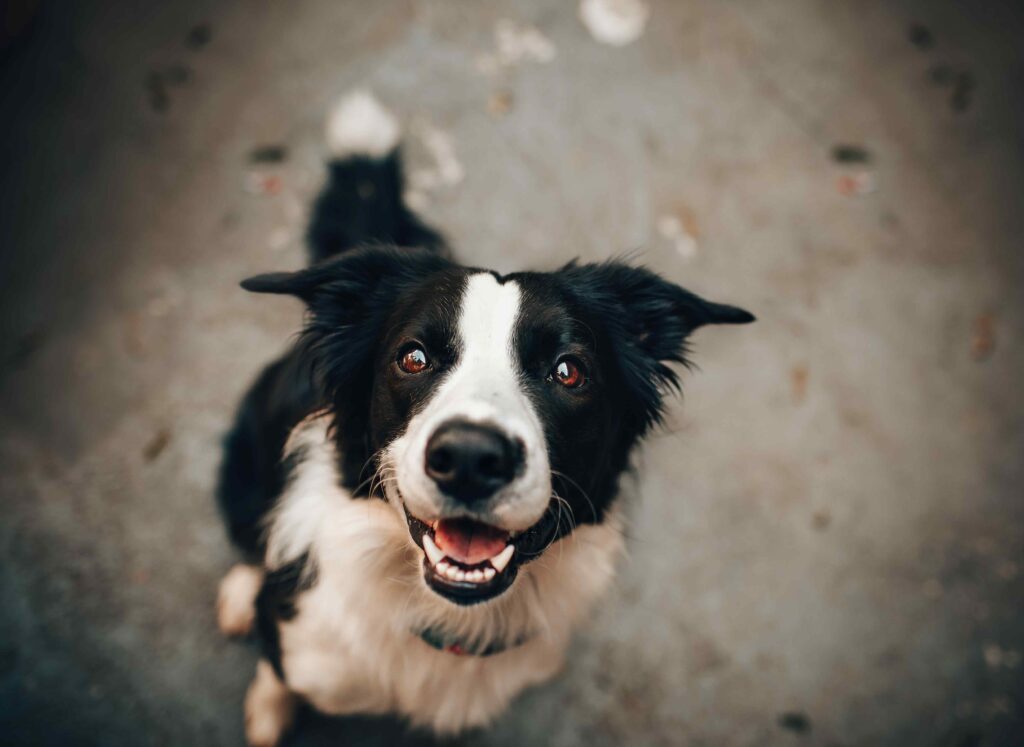
Dogs Only Wag And The Direction Of The Wag
Dogs are known for wagging their tails, and it has been a source of fascination for dog owners and animal behaviorists alike. But why do dogs wag their tails? It turns out that the direction of the wag actually has a lot to do with the dog's emotional state. When a dog wags its tail to the right, it usually indicates a positive emotional state, such as happiness or excitement.
On the other hand, when a dog wags its tail to the left, it might indicate a negative emotional state, such as fear or anxiety. Additionally, the speed and height of the tail wag can also provide insight into a dog's mood. A fast and high wag might indicate extreme excitement, while a slow and low wag might indicate a more subdued emotional state.
Overall, understanding the direction and intensity of a dog's tail wag can be a useful tool in communicating with our furry friends and understanding their emotional needs.

Conclusion: Canine Tail Wagging Benefits
Dogs wag their tails for a variety of reasons. It is primarily a means of communication, but it can also indicate excitement, happiness, or even aggression. For example, when a dog wags its tail rapidly in short movements, it may be feeling uneasy or threatened. Conversely, if the tail is held high and wagged slowly from side to side, it could indicate confidence or dominance.
The benefits of understanding tail wagging behavior go beyond just being able to read your own dog's emotions. The ability to interpret other dogs' body language can help prevent potentially dangerous situations at the dog park or on walks. Additionally, knowing how to approach unfamiliar dogs based on their tail movements can help build trust between humans and our canine companions.
In conclusion, whether you are a seasoned dog owner or simply an animal lover, understanding the nuances of tail wagging behavior is essential for building strong relationships with these furry friends. By paying attention to subtle cues in their body language and respecting their boundaries when necessary, we can create harmonious connections that will last a lifetime.
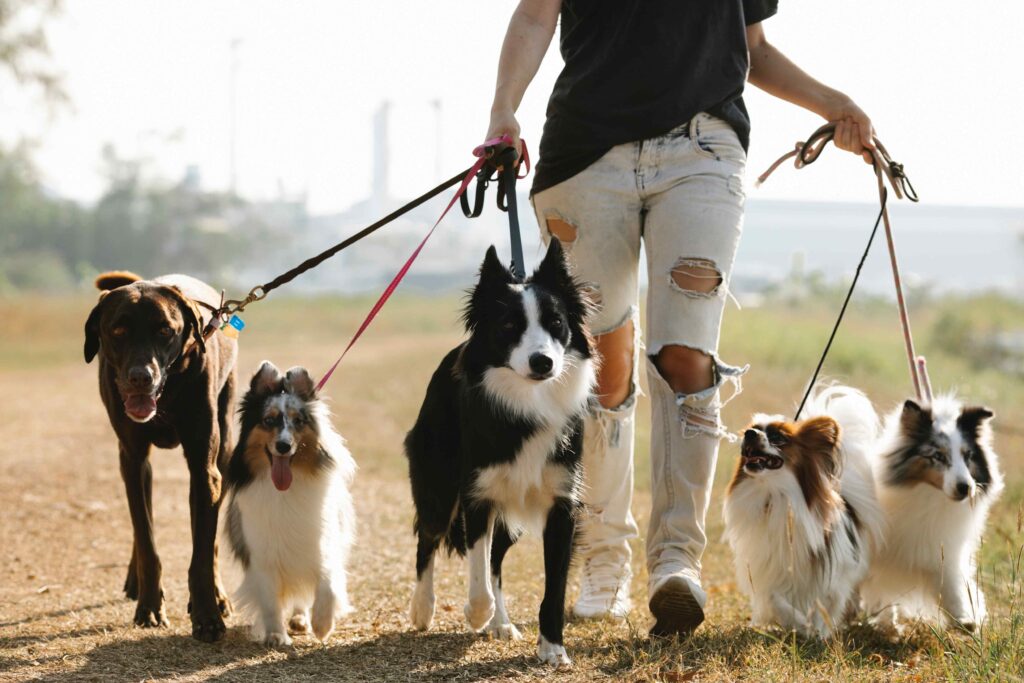
Related Articles
Healthy Pet Club Why Do Dogs Wag Their Tails?
Blue Cross Why Do Dogs Wag Their Tails?
https://www.bluecross.org.uk/advice/dog/why-do-dogs-wag-their-tails
AKC Why Do Dogs Wag Their Tails?
https://www.akc.org/expert-advice/lifestyle/why-do-dogs-wag-their-tails/
Purina Why Do Dogs Wag Their Tails?
https://www.purina.co.uk/articles/dogs/behaviour/common-questions/why-do-dogs-wag-their-tails
Live Science Why Do Dogs Wag Their Tails?
https://www.livescience.com/45196-why-do-dogs-wag-their-tails.html
In Verse Why Do Dogs Wag Their Tails?
https://www.inverse.com/science/why-do-dogs-wag-their-tails
Wild Earth Why Do Dogs Wag Their Tails?
https://wildearth.com/blogs/dog-knowledge/why-do-dogs-wag-their-tails
Insider Why Do Dogs Wag Their Tails?
https://www.insider.com/guides/pets/why-do-dogs-wag-their-tails
Pet MD Why Do Dogs Wag Their Tails?
https://www.petmd.com/dog/behavior/why-do-dogs-wag-their-tails
Pet Health Why Do Dogs Wag Their Tails?
https://www.pethealthnetwork.com/dog-health/dog-behavior/why-do-dogs-wag-their-tails
Daily Paws Why Do Dogs Wag Their Tails?
https://www.dailypaws.com/dogs-puppies/dog-behavior/common-dog-behaviors/why-do-dogs-wag-their-tails
Pure Foods Why Do Dogs Wag Their Tails?
https://www.purepetfood.com/blog/why-do-dogs-wag-their-tails
Break Through Dog Why Do Dogs Wag Their Tails?
https://www.breakthroughdog.co.uk/articles/health-and-wellbeing/why-do-dogs-wag-their-tails/
Nerd Momma Why Do Dogs Lick People Excessively?
https://nerdmomma.com/why-do-dogs-lick-4-charming-reasons/#more-1856
Nerd Momma Why do dogs eat grass? Is it to make them vomit?
https://nerdmomma.com/why-do-dogs-eat-grass-7-surprising-reasons/#more-1741
Nerd Momma Why do dogs howl? The reason why dogs howl.
https://nerdmomma.com/why-do-dogs-howl9-awesome-facts-why-dogs-howl/#more-1716
